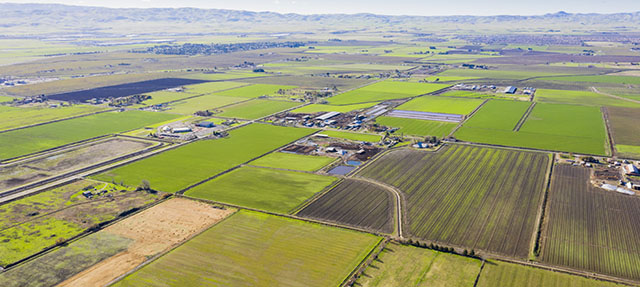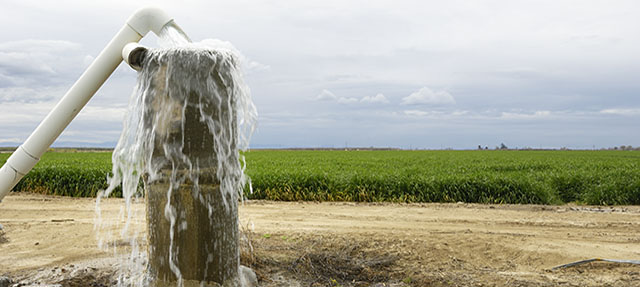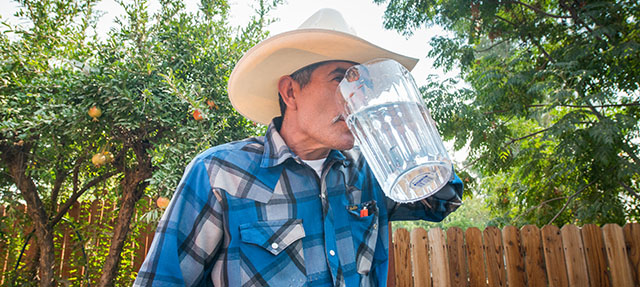This commentary was published in the Fresno Bee on June 12, 2020. See our blog series on groundwater sustainability plans.
In these extraordinary times, managing groundwater for long-term sustainability may not seem like a top priority. But in the San Joaquin Valley—where groundwater supplies have been declining for decades—excess pumping is a critical problem, with major implications for public health, jobs, the environment, and local economies.
The state’s Sustainable Groundwater Management Act (SGMA) requires groundwater planning and actions to sustain this vital resource. Agencies from California’s 21 “critically overdrafted” basins—including 11 large basins that span most of the San Joaquin Valley floor—submitted their first groundwater plans in January.
As part of our long-term work to build shared understanding of water challenges and solutions in the valley, the Public Policy Institute of California reviewed the 36 plans developed for these basins to see how well they tackle some key issues.
It’s clear that tremendous effort has gone into SGMA planning. New institutions were created to manage groundwater; huge amounts of information were compiled, shared, and analyzed; and diverse stakeholders began charting a path to manage an essential resource in a fundamentally new way.
But it’s also clear that much more work still lies ahead. The plans are too local to successfully manage the transition to groundwater sustainability. And there are gaps in addressing two major consequences of overdraft: domestic well dewatering and land subsidence (sinking). PPIC summarized these findings in comments to the Department of Water Resources (DWR), which is in charge of reviewing and approving the plans.
Here are three changes that will be essential to ensure success:
First, look beyond local plan boundaries: The new plans emphasize expanding local water supplies to end overdraft, but the numbers don’t add up: many plans are counting on using the same drops of water to fill their gaps. More cooperation within and across basins will be necessary to reduce competition and make the most of available water resources. A regional approach will help the valley’s stakeholders develop successful programs to recharge basins with winter floodwaters, address water infrastructure needs, share water, and more.
The state’s role in ensuring coordination is key. DWR needs to assess not only how well individual plans comply with the law, but also how plans within regions fit together and solve the regional aspects of groundwater overdraft. The state can also incentivize cooperation with grants and technical support.
Second, do a better job addressing the undesirable results of overdraft. Groundwater is the valley’s primary source of drinking water. Overdraft has caused many shallow domestic wells to go dry, a problem made more acute by drought. Overdraft also causes land to subside, which is damaging critical infrastructure—affecting parties both locally and many miles away. Many of the new plans have major gaps in addressing these problems. When the next drought hits—and given this year’s dry conditions, it may already be upon us—these problems could worsen. The state should require more extensive analysis and proactive responses, and support data collection that helps locals address these problems. Local agencies should also actively pursue mitigation strategies—such as drilling deeper drinking water wells or connecting homes to nearby water systems—as these can be much less costly to the economy than setting very stringent pumping restrictions.
Third, pilot promising new approaches. Successful implementation of SGMA will require people to get outside of their comfort zones and do things in new ways. For most agencies, that means making greater efforts to manage water demand, which will need to be an important part of SGMA solutions. Some stakeholders are taking small steps forward in these areas. For example, a local groundwater market is getting started in the Kern basin, and initial plans are underway to consider strategic land retirement in the Kaweah basin. The state and federal governments can help by supporting local pilot programs. Another priority includes a new approach to allocating floodwaters for recharge. An auction mechanism has several advantages: it could reduce conflict, ensure water gets into the ground faster, and enable water to go to the most beneficial uses.
It’s still early days in the sweeping effort to rethink the future of groundwater in California, and there’s time to address these gaps. But groundwater planning will be affected by the pandemic’s economic impacts, which are likely to affect budgets for some time to come. Maintaining momentum on SGMA—even in these challenging times—is key to safeguarding the valley’s future well-being.






